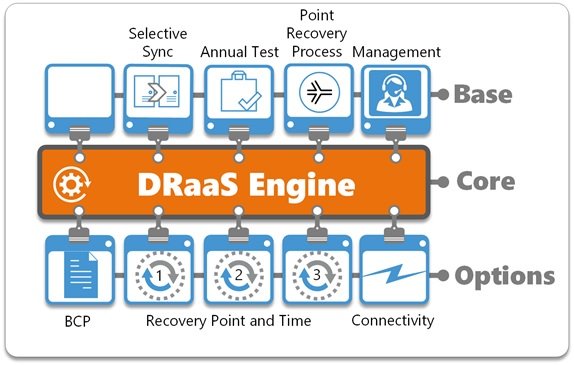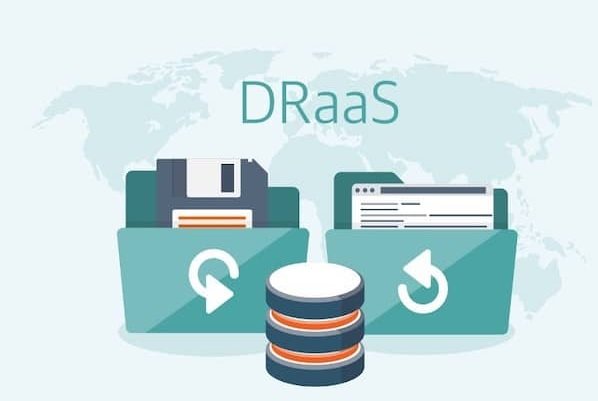What is DRaaS? The Disaster Recovery As A Service Refers To A Process In Which A Company Uses Third-Party Physical Or Virtual Servers Alongside Major Servers To Recover After A Natural Disaster Or Man-Made Cyber-Attack.
The Disaster Recovery As A Service Refers To A Process In Which A Company Uses Third-Party Physical Or Virtual Servers Alongside Major Servers To Recover After A Natural Disaster Or Man-Made Cyber-Attack.
Why is DRaaS useful?
Millions of businesses around the world are exposed to a variety of natural disasters. Imagine if a power outage, hardware failure, file corruption, human error, earthquake, flood, storm, lightning, fire, freezing weather, or tornado hit your data center.
It is likely to cause serious disruptions in service delivery, which can cause the website to experience a severe drop in performance or a complete loss of customer information.
A study published by the Ponemon Institute titled Data Center Outage Compensation shows that unplanned breakdowns cost organizations an average of $ 8,850 per minute.
The Federal Emergency Management Agency (FEMA) reports that 43% of organizations affected by a natural disaster will never reopen, and 29% will close within two years after an accident occurs.

DRaaS create to provide enough time for data centers to recover.
More precisely, the data recovery process is as close to the present as possible. Typically, data centers take up to 4 hours to recover, depending on the size of the data center and its geographical location.
For example, if your data center in Florida is affected by a hurricane, DRaaS ensures that your data will not lose by shifting data center traffic and damaged servers to symmetric servers in another city such as Nevada that was not affected storm.
What should be considered when choosing DRaaS?
First, check the Service Level Agreement (SLA) to ensure your company’s services. For example, SLA ensures that your important programs work within an hour and everything is back to normal.
DRaaS costs are variable, so beware of hidden costs, i.e., recovery costs per gigabyte, increasing significantly.
Use DRaaS with the data protection pattern. The cloud is an ideal place to store data for a long time because the data generated and hosted in the cloud is out of reach of ransomware.
Pay only for what you use. Choose a provider that offers different DRaaS services in different classes.
Use the so-called cloud planting options. Based on this cloud capability, you can use physical media (for example, magnetic tapes, servers, hard disks, etc.) to load information into the cloud and restore databases that have been corrupted for some reason.
DRaaS can protect against cloud applications. To do this, you must deploy a backup application to the cloud and store the data on a specific hyper-centric application to maintain data security and integrity.
Assess automatic service test recovery. You should have an automated test at least once a month after any changes to the infrastructure to make sure your programs are really improving.
Use targeted clouds. Targeted Clouds provide seamless integration between your backup equipment and the cloud, comprehensive support, and different recovery intervals.
Look for a company that has cloud management software.
Some RaaS service providers have developed cloud management software that allows companies to easily experience the cloud migration process and make the most of their recovery and backup capabilities, especially in a natural disaster. Typically, these software’s provide a hybrid cloud.
RaaS architectural models vary depending on the company, the type of service, and its resources.
The most important architectures in this field are the following:
To-cloud RaaS:
To-Cloud Recovery is when the source application is in the private user’s private data center, and the cloud is used as a backup or for recovery.
In-cloud RaaS:
Cloud recovery is when both the source and the recovery sites are hosted in the cloud.
From-cloud Raas:
Cloud recovery is when the main application or data is in the cloud or the target tasked with backing up or retrieving data is located in a data center.
The need for backup continues to grow as more companies move their technical infrastructure to cloud services. Companies that rely on large cloud service providers such as Microsoft often do not realize that they are responsible for backing up and retrieving their data.
Accordingly, the disaster recovery market as a service is expected to grow rapidly. The global disaster recovery market as a service reached $ 2 billion in 2017, and some experts predict that it will reach $ 13 billion by 2023.

